Brand 2025. 07. 07
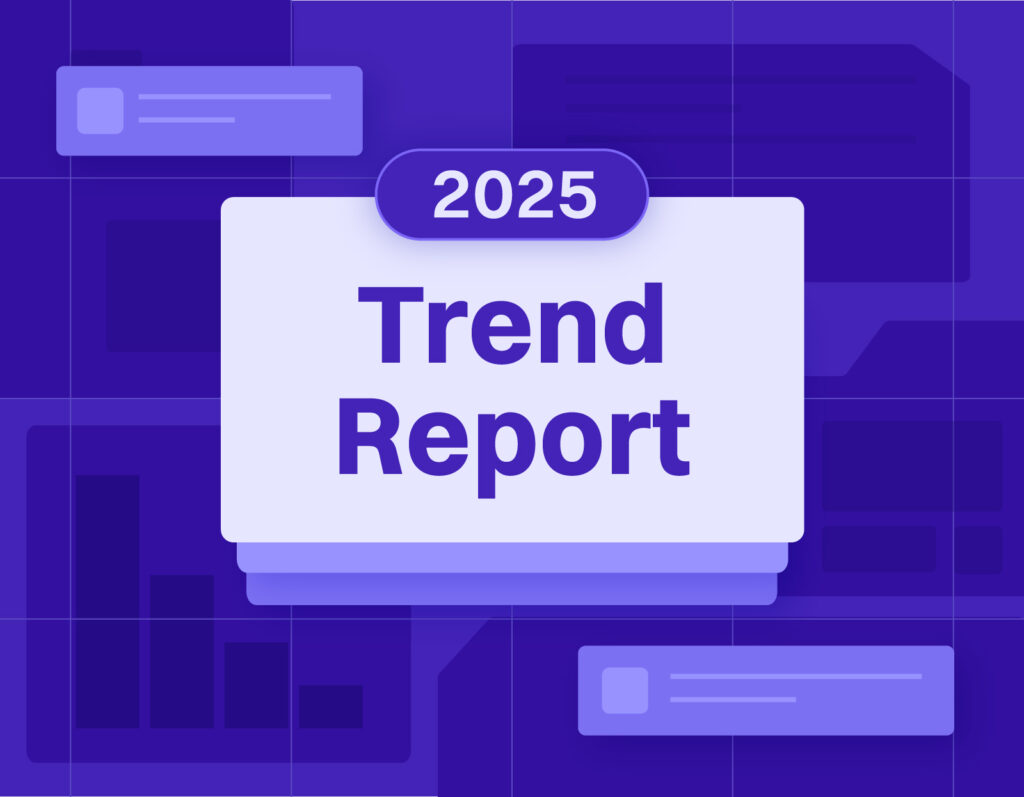
Since the early 2020s, the pandemic has shaken global supply chains,
and the digital consumer landscape has evolved rapidly,
causing many brands to lose their way.
Now, in 2025,
what lies ahead for the fashion industry?
McKinsey & Company and Business of Fashion have published
their annual report, “The State of Fashion 2025,”
which outlines five mega trends set to reshape the industry
within the next one to two years.
Through this report,
we want to explore where the industry is heading
and what we should be preparing for right now.
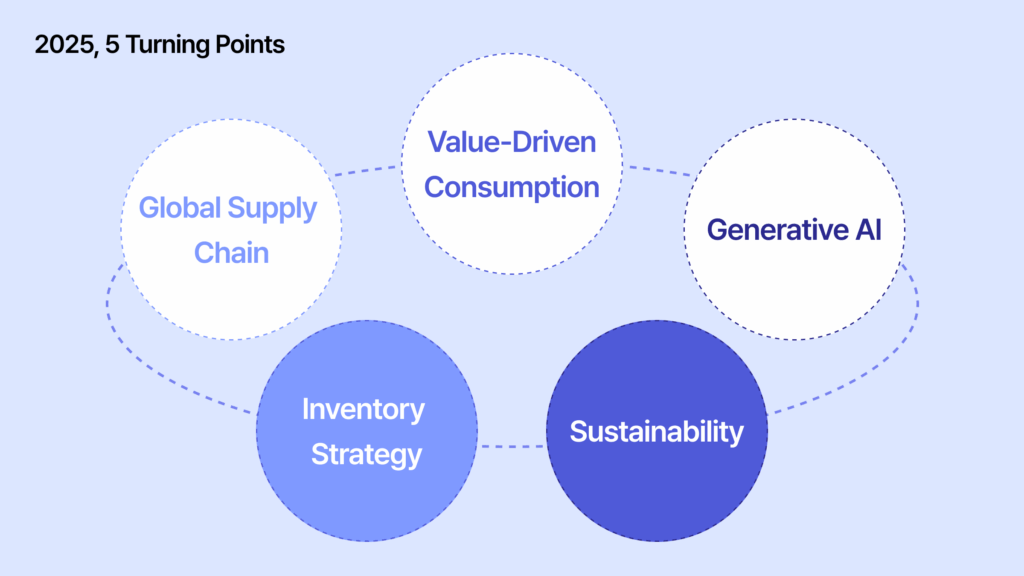
2025 Fashion Industry : 5 Key Trends
Global Supply Chain Reconfiguration: The Era of Single Sourcing Is Over
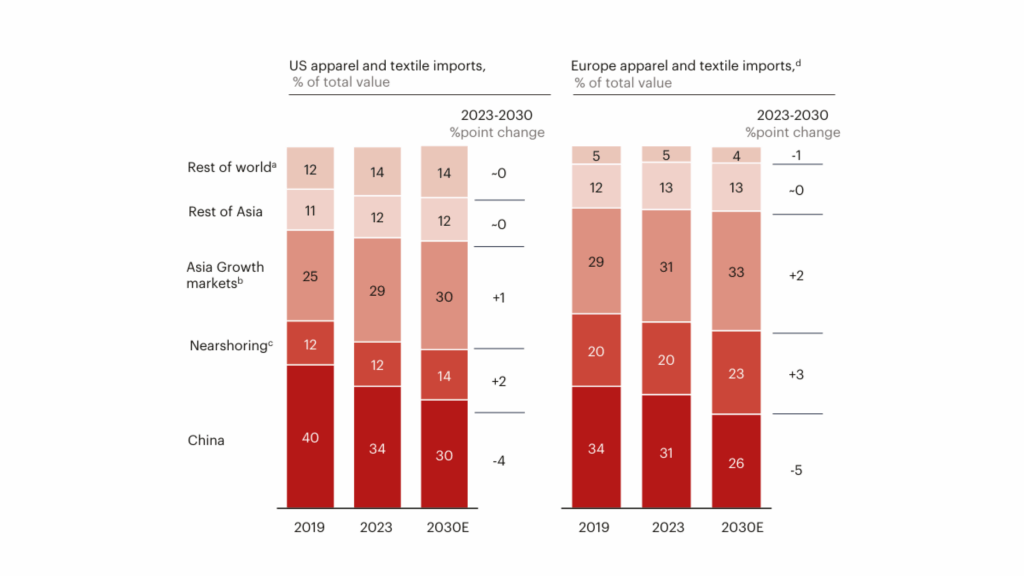
With rising raw material and manufacturing costs, trade tariffs,
and tightening ESG regulations,
brands are being forced to rethink their sourcing strategies.
Emerging economies like India are rising as manufacturing hubs,
while the U.S. is expanding near-shoring efforts in Latin America,
and Europe is turning to Turkey and Eastern Europe for regional production.
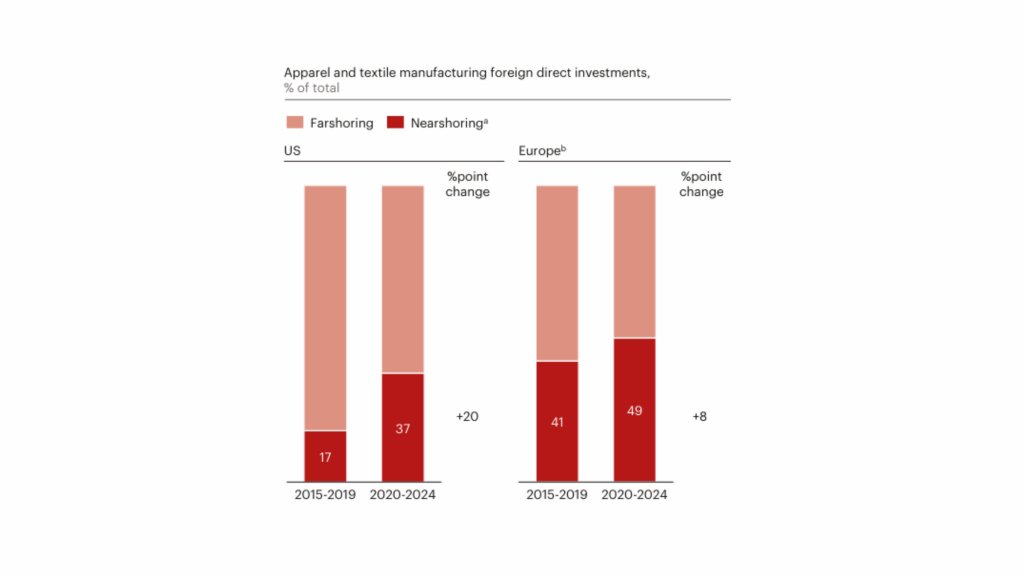
As shown on the map,
brands exporting to the U.S. are increasingly leveraging factories
in Central and South America,
while those exporting to Europe are shifting
toward Eastern Europe.
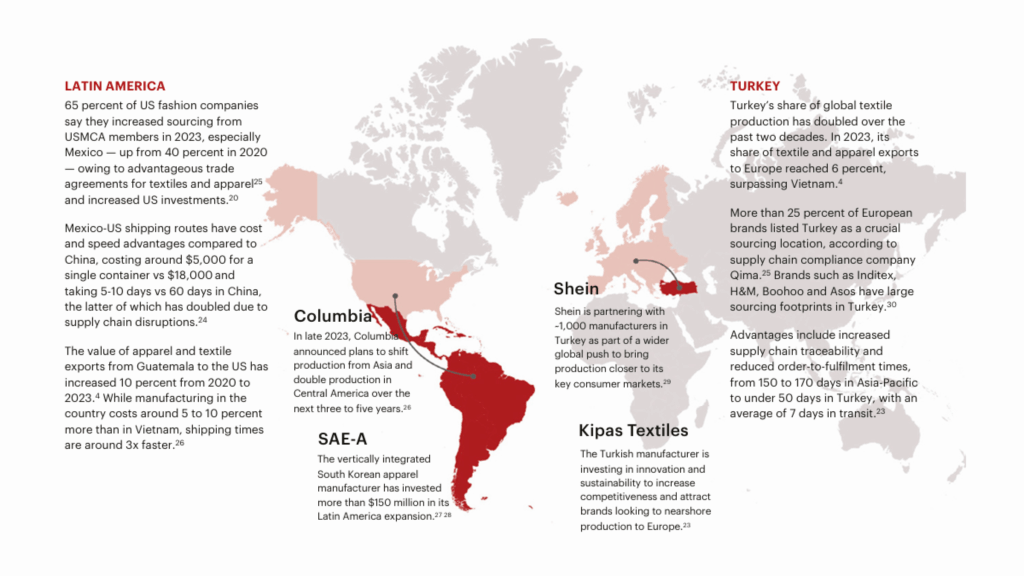
Generative AI and Fashion: Changing the Way Consumers Discover Brands
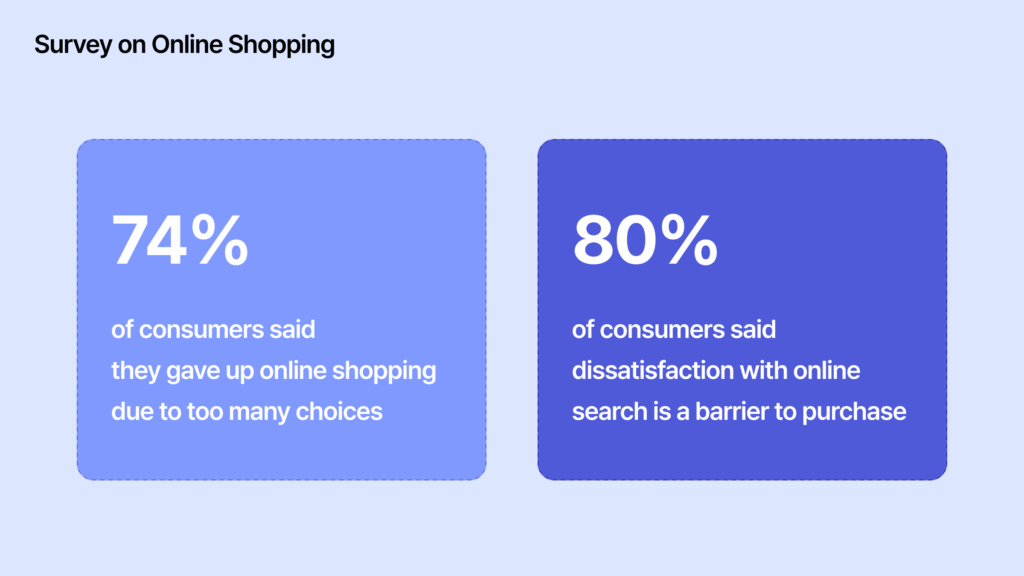
Consumers are overwhelmed by endless choices,
and brands are struggling with declining conversion rates.
As a result, brands are now redesigning product discovery experiences
using AI-powered recommendation engines and content curation tools.

AI is no longer just a tool for automation—
it has become a key instrument
in crafting personalized customer journeys.
Technologies that reduce “decision fatigue” will drive brand conversions in the future.
Rise of Value-Driven Consumption: Spend Less, Choose Smarter
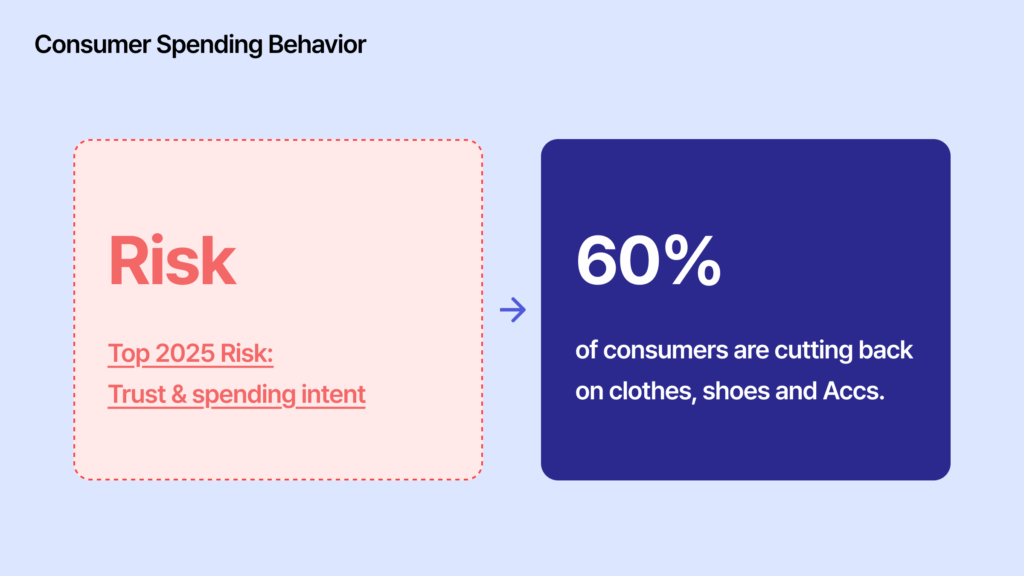
Amid inflation and economic pressures,
consumers are increasingly prioritizing cost-effectiveness.
This shift is fueling the growth of resale platforms, off-price models,
and “dupe” (lookalike) markets.
To win over consumers,
brands must clearly articulate their value proposition.
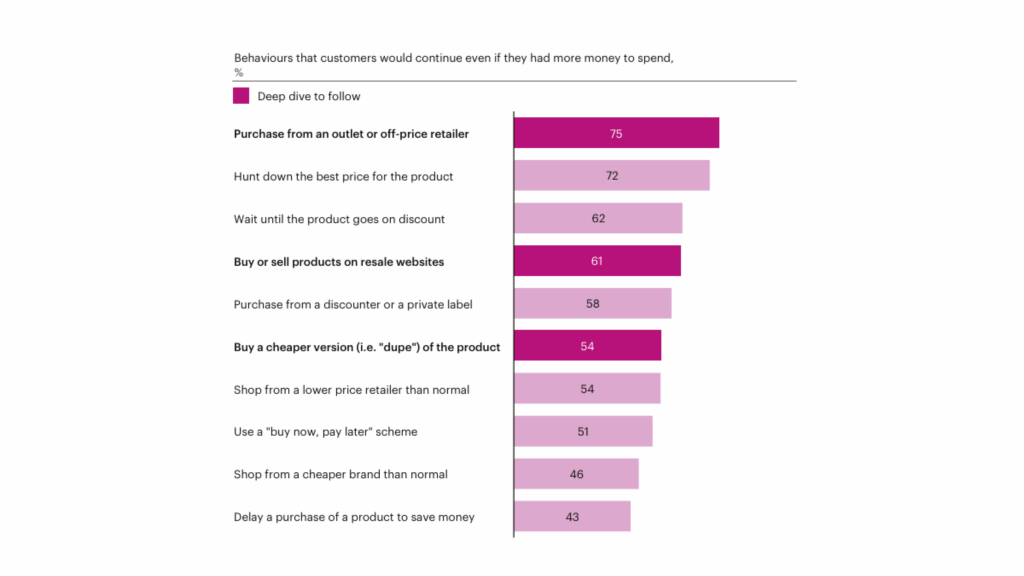
Consumers now demand more than just low prices—
they want to know why this brand deserves their wallet.
Clear storytelling and brand identity are more important than ever.
Redesigning Inventory Strategy: Between Overstock and Stockouts
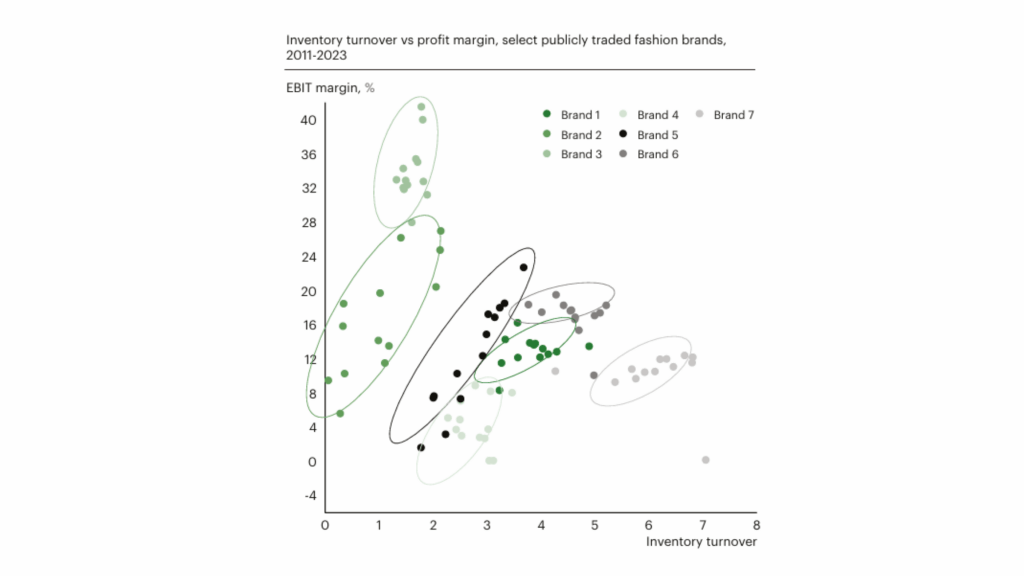
There is a direct correlation between inventory turnover and profit margins.
Overstock and stockout issues persist,
negatively impacting both profitability and customer satisfaction.
In 2025, as margin pressure meets sustainability regulations,
brands are emphasizing end-to-end inventory planning driven by technology.
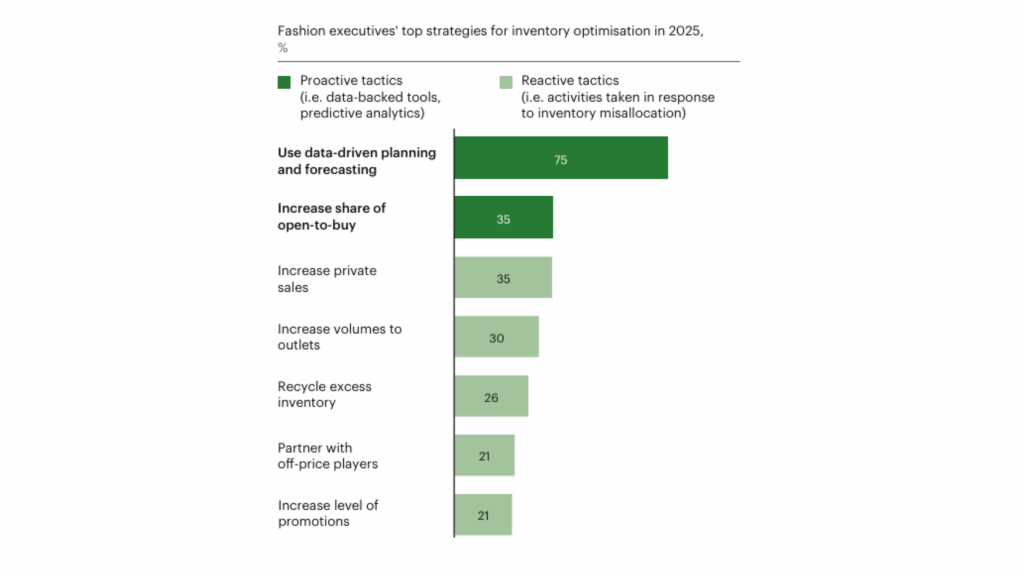
According to leading brand executives,
the key is not merely reducing inventory
but enhancing prediction and response capabilities.
Data-driven demand forecasting and integrated operations
are becoming core strengths.
Collective Action on Sustainability: The Time to Act Is Now
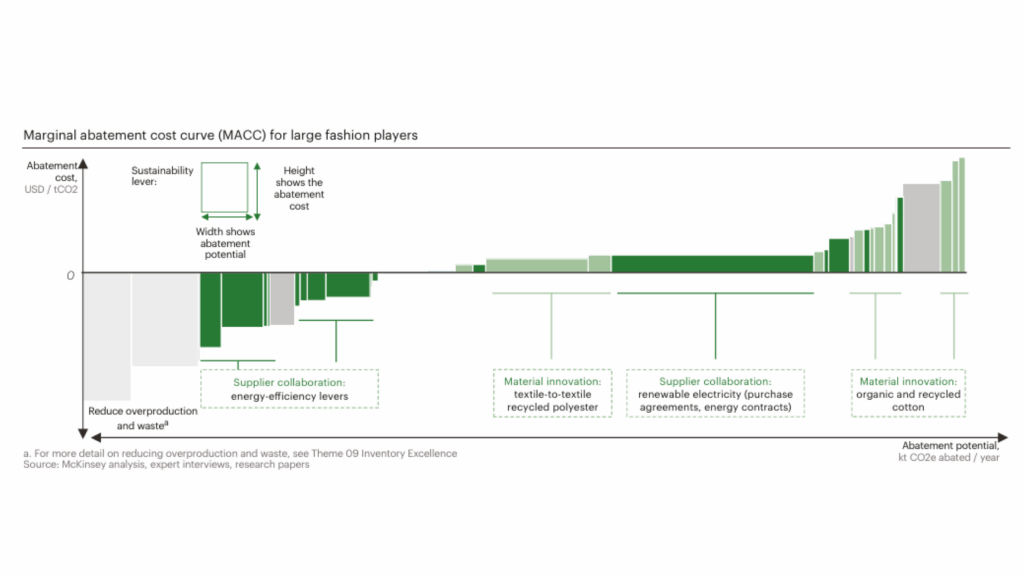
The Marginal Abatement Cost Curve (MACC) helps
prioritize carbon reduction strategies
by showing the cost (vertical axis)
and carbon reduction potential (horizontal axis) for each initiative.
For instance, reducing overproduction and waste
was found to lower both carbon emissions and costs.
Improving factory energy efficiency
offered high ROI and strong feasibility.
On the other hand,
using recycled materials or organic cotton
offered high carbon impact but came with higher costs.
Switching to renewable energy is important,
but it often involves high upfront investment and complex implementation
—best suited for mid- to long-term strategies.
Based on this analysis,
we are first implementing “low-cost, high-impact” initiatives
such as waste reduction and energy optimization.
Digital transformation, in this context, is not just about automation—
it’s about building agile systems that can detect and act on waste immediately.
In Closing
2025 is not just a shift in fashion trends—
it’s a year when the entire structure of the fashion industry is being redesigned.
Brands will have to continuously ask themselves:
What are we making? How are we making it? And why?
In the midst of this change,
what we need may not be a “quick choice,”
but a better decision.
🔽 Check out the related post
👉 (-ing) tense of clothing Ep.2: What’s Next? The shift in apparel production bases
References
